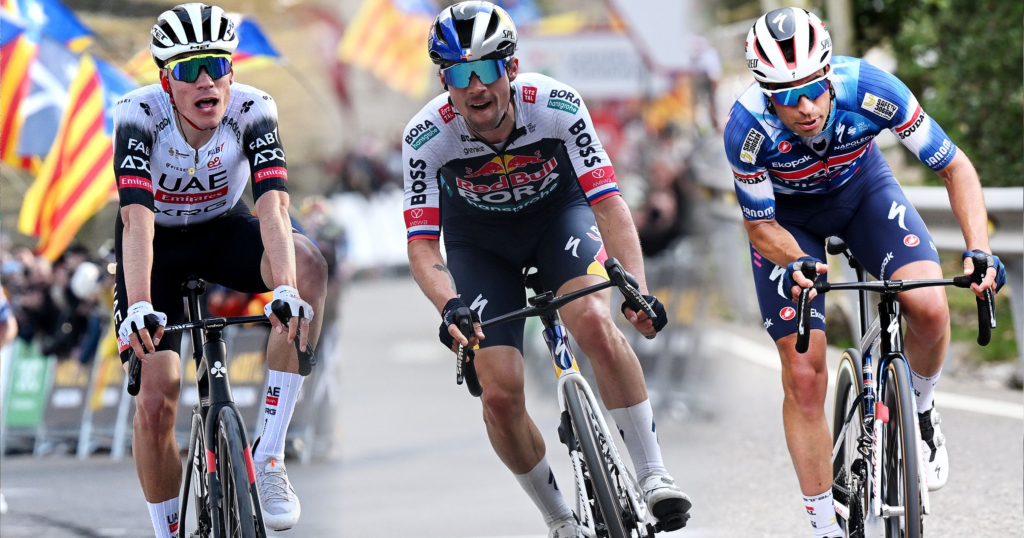The 2025 Giro d’Italia is set to make a historic opening in Durres, Albania, marking its first presence in the country, just 72 kilometers across the Otrando Strait from Italy. This prestigious cycling race is noteworthy not just for its geographical proximity but also for its ambitious commitment from the Albanian government, which is reportedly spending €7 million to host three stages of this monumental event. Over the past two decades, only one Albanian cyclist, Eugert Zhupa, has participated in the Giro, from 2015 to 2018, but the excitement surrounding this year’s debut is palpable, even in the absence of prominent local riders.
The inaugural three stages promise a diverse range of challenges that cater to various types of cyclists, steering clear of predictable bunch sprints. The first stage features a dramatic route that includes a dual ascent of the Surrel climb en route to Tirana, making for an unpredictable 160-kilometer ride. Cyclists not traditionally seen as genuine contenders for the general classification may find their opportunities on this stage, setting the stage for an exhilarating start.
The second stage is a compact yet flat 13.7-kilometer time trial that should favor the race’s general classification (GC) favorites without disrupting their strategies. The third stage takes cyclists from and back to Vlore, introducing a tough climb at Qafa e Llogarase, with a gradient of 7.4% over 10.5 kilometers, just prior to a flat dash to the finish. This mixture of terrain adds to the intrigue as teams prepare for early strategy assessments before the race officially shifts into Italy.
Following an initial rest day, the race returns to Italy with prospects of high-paced bunch sprints in Lecce and Napoli, punctuated by a punchy finish in Matera. The essence of the race begins to crystallize around the second Friday, particularly with Stage 7, which sees a significant rise in stakes as the riders face their first summit finish.
Stage 7 spans 168 kilometers from Castel di Sangro to Tagliocozzo, punctuated by rigorous climbs—four in total—cumulatively resulting in 3,800 meters of elevation gain. This stage should be a critical turning point in terms of GC standings, particularly with the first serious ascent to Roccaraso likely to splinter the peloton under a high pace. The subsequent climbs, including the formidable Monte Urano and Vado della Forcella, present further hurdles before the final climb to Tagliacozzo, where the gradient intensifies to challenge even the most robust of cyclists.
The action continues to escalate over the Apennines in Stage 8, followed by a series of more forgiving stages which include expected sprints but also emphasize the race’s puncheur-friendly aspects. The first significant showdown occurs on Stage 9, renowned as ‘the Strade Bianche stage,’ which integrates 29.5 kilometers of Tuscan sterrato—an often treacherous terrain requiring skill beyond mere climbing.
As the Giro progresses through its third week, more challenging stages like Stage 11, featuring the Alpe San Pellegrino climb, unfold. Here, the average gradient reaches an arduous 8.8%, further testing the strength of the leading riders who may be battling fatigue just before entering the final, decisive stretches.
Further in the race, Stage 16 spans 203 kilometers and includes four demanding climbs, ensuring that fatigue plays a key role in the riders’ performances. The riders must remain vigilant and strategically savvy throughout their climb to avoid losing time against their competitors. The anticipation builds right to Stage 19—a decisive day with nearly 5,000 meters of vertical elevation over five categorized climbs—testing resolve and strategy further as the cyclists inch closer to the final conclusion.
As attention mounts on the concluding stages, particularly the penultimate Stage 20 to Sestriere, the stakes become incredibly high, suggesting that tensions will be rife among riders as they push for supremacy. The final day, a circuit in Rome, promises excitement with sprinters potentially clinching victories while a contestant for the pink jersey rolls into the Italian capital.
The question now remains who will emerge victorious. Riders like Primoz Roglic, Juan Ayuso, and Tom Pidcock are anticipated as potential favorites, while seasoned competitors like Richard Carapaz and Mikel Landa are also in the mix. As excitement builds, fans eagerly await the definitive pink jersey guide, spotlighting the riders leading up to this epic race. With every stage promising fierce competition and dazzling displays of endurance, the 2025 Giro d’Italia is primed to deliver another thrilling chapter in cycling history.



